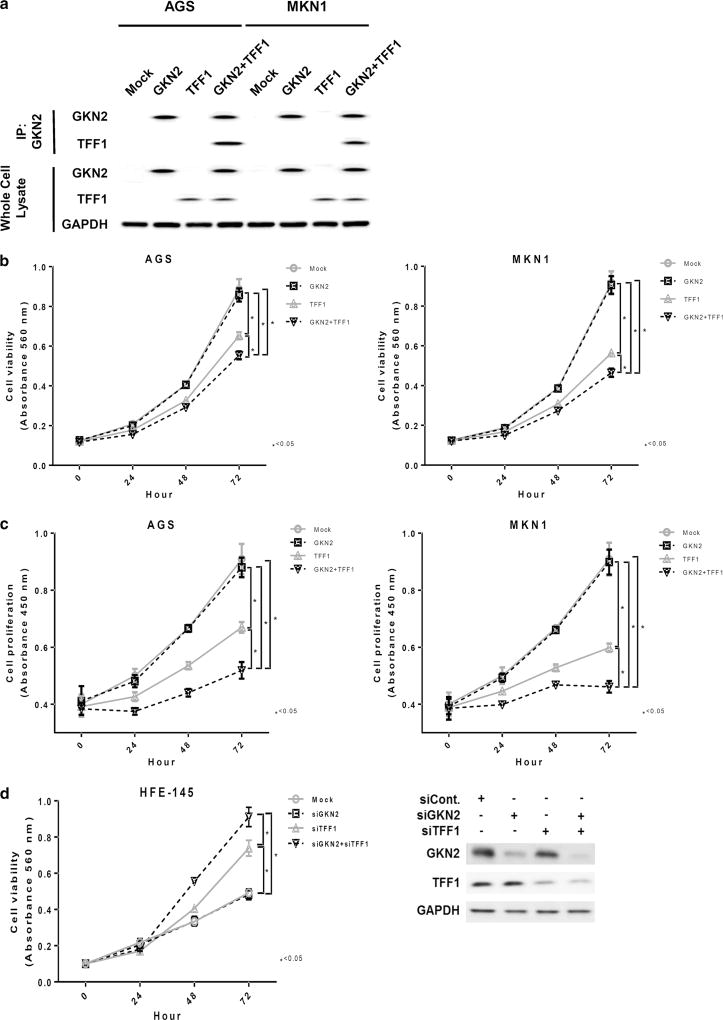Fig. 1.
a–d Synergistic antiproliferative effects of the interaction of GKN2 and TFF1 in gastric cancer cells. a In co-immunoprecipitation analysis, AGS and MKN1 cells transfected with GKN2 and TFF1 showed the formation of a complex of GKN2 and TFF1. Examination of whole-cell lysate served as a control for GKN2 and TFF1 protein expression. b In the MTT assay, TFF1 significantly suppressed cell viability in a time-dependent manner, whereas GKN2 alone failed to exert a notable effect on cell viability. The interaction of GKN2 and TFF1 synergistically enhanced the inhibition of the cell viability of AGS and MKN1 cells. c In the BrdU incorporation assay, transient transfection with TFF1 led to a time-dependent reduction in cell proliferation, especially at 48 and 72 h after transfection. However, co-expression of GKN2 and TFF1 resulted in a more substantial antiproliferative effect on AGS and MKN1 gastric cancer cells than transfection with TFF1 or GKN1 alone. d Cell viability was examined by MTT assay in HFE-145 non-neoplastic gastric epithelial cells after silencing GKN2 and TFF1 using siGKN2 and siTFF1, respectively. GKN2 silencing by siGKN2 did not lead to significant changes in cell viability, whereas knockdown of TFF1 resulted in elevated cell viability. Simultaneous knockdown of both GKN2 and TFF1 led to a more substantial increase in cell viability than silencing GKN2 or TFF1 alone did. Data are expressed as mean values ± SD from at least three independent experiments. The unpaired Student’s t test was used to analyze statistical differences in cell viability and proliferation between experimental groups. P < 0.05 was considered statistically significant

